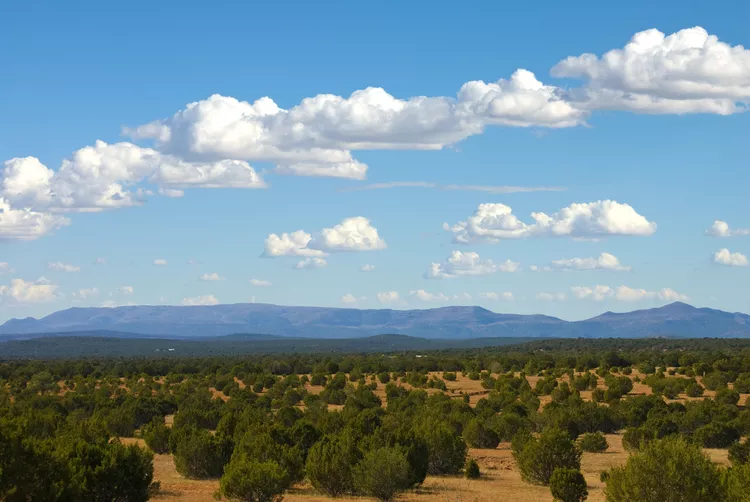All About the Sandia Mountains
The Sandia Mountains flank the city of Albuquerque’s east side, providing not only stunning scenery and a place to participate in all a mountain has to offer but also serving as a natural compass point. Locals understand that by looking at the majestic mountains, they are indeed facing east.
These mountains boast spectacular beauty. The term “Sandia” translates to watermelon in Spanish, and this name becomes evident during sunset when the sunlight paints the western face of the mountains in vibrant pink hues reminiscent of the fruit they are named after.
The Sandia Mountains rise to an impressive height of 10,678 feet at Sandia Crest, which is a well-known tourist destination. The Sandia Tramway offers a thrilling 2.6-mile ride from the foothills of the city to the peak of the mountain. Visitors are treated to breathtaking views that extend across over 11,000 square miles of unspoiled New Mexico landscape. At the crest, there is a restaurant, a ranger station featuring interpretive displays, and a popular hiking trail. During winter, the Sandia Peak Ski Area opens its slopes for skiing, accessible via tram or by car from the eastern side of the mountains.
Geologically, the Sandias are positioned along the eastern edge of the Rio Grande Rift valley and were formed over the last 10 million years. The mountains consist mainly of granite known as Sandia granite, which is topped with limestone and sandstone layers. This unique granite gets its pinkish hue from potassium feldspar crystals embedded within it.
Stretching approximately 17 miles from north to south, the Sandia Mountains are part of both the Sandia and Manzano Mountain ranges. The Manzano Mountains lie to the south, separated by Tijeras Canyon and a mountain pass where Interstate 40, along with historic Route 66, traverses through the area.
Available Activities
The Sandia Mountains serve as a recreational haven for both locals and visitors year-round. During winter, they attract skiers, snowboarders, and snowshoers eager to tackle their slopes. The Sandia Crest Byway is a favorite among motorcyclists and those enjoying scenic drives, while the multitude of trails crisscrossing the range makes it an appealing destination for hikers and bicyclists. Moreover, rock climbers are drawn to the challenging rock faces located on the western edge of the mountains. Even hang gliders take advantage of favorable weather conditions to soar off the mountain.
In addition to adventure activities, the mountains are home to various picnic areas. Notably, the Sandia Man Cave, located near the village of Placitas along Las Huertas Canyon, is a popular spot that offers an easy climb and a great destination for a family outing.




